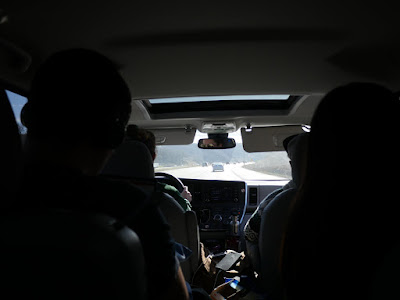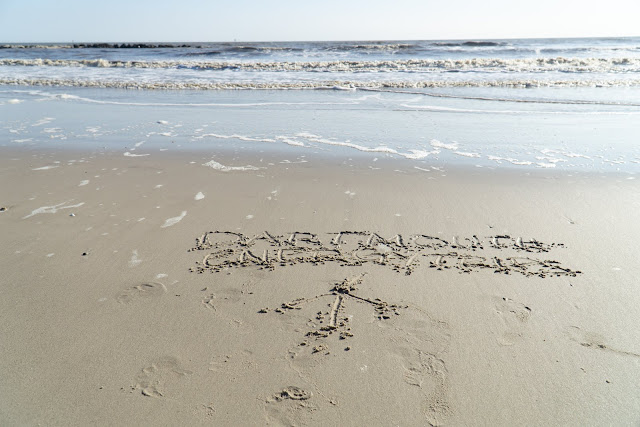A Trip Down the Memory Interstate
by Mary Versa Clemens-Sewall
I woke under sloped ceilings heavy with picture frames. My room in the bed-and-breakfast featured garish decorations, low overhead clearance, and obscured windows that scared off most of the rest of our group, but I slept fine! As far as I am aware, none of the portrait subjects left their canvases and caused mischief in the night…
I woke under sloped ceilings heavy with picture frames. My room in the bed-and-breakfast featured garish decorations, low overhead clearance, and obscured windows that scared off most of the rest of our group, but I slept fine! As far as I am aware, none of the portrait subjects left their canvases and caused mischief in the night…
After breakfast in
the sunny lounge area, we set off to traverse West Virginia. Starting at the
Kentucky border, we drove north along I-79—my memory lane—to Morgantown. We
first passed roadside sights from yesterday’s journey south to Kentucky. As we
entered the center of the state, we began to recognize establishments that we
had passed on our frequent trips between Montgomery and Charleston: the bookstore
where we ate frozen yogurt, the Lutheran church with three red crosses where we
always waited at a red light, etc.


I remembered the scenes of our trip that
took place in and around these locations. How had I been feeling when we left
the bookstore? I think I was in the throes of my ill-timed head cold, but I had
just witnessed how much my trip mates cared about my comfort and appreciated my
presence. During which car conversations had I looked up and noticed those
three crosses? Maybe it was when my trip leader connected a recent outing to the
activist work she does on campus.
Moreover, how did these mundane landmarks
feel familiar even though I had never seen them before a week ago? And, will
they remain in my mental inventory for weeks or months or years to come? I
trust that what I learned with each of these backdrops will continue to
influence my actions and choices, even if the images fade from memory. The
substance of our various excursions informed our reflections on what productive
social and economic change might look like in this place, and the loving
support of my trip mates reinvigorates my confidence to seek such change.
We left behind the
now-familiar landmarks as we advanced toward Morgantown, where we encountered several
contrasts between this larger college town and the smaller rural communities
that had hosted us so far.
For one, Morgantown boasts a wide array of local restaurants. We sampled Mediterranean fare for lunch and a creative burrito spot for dinner. My falafel at the former was so good that I ordered a delicious Greek-inspired burrito at the latter.
In between, we visited West Virginia University’s Land Use Law Clinic. Our primary contact was attorney Catherine Garvey. She and her colleagues serve communities like Montgomery, Mt. Hope, and Fayetteville by drawing up comprehensive plans for redevelopment.
She explained that well-intentioned consultants often lay out ambitious plans to stimulate local industries and create jobs. However, she and her peers know that many of these communities lack clean drinking water and sewage treatment mechanisms, so the plans drafted by this law clinic give citizens concrete steps for addressing such infrastructure needs. Thereafter, community leaders are well-positioned to apply for various economic development grants to grow local economies.
Our conversation with Catherine brought up several themes of the trip. We discussed how a disconnect can occur in West Virginia towns between eager visitors and everyday residents. We also considered why different towns founded on coal have experienced different levels of revitalization in recent years.
Our meeting took place in a comfortable conference room with a wall of windows that gave us a commanding view of most of the surrounding neighborhood. I sensed that from this law clinic, we addressed the challenges facing these small towns from a similarly removed perspective.
We spent the past week in the coalfields—on the hilly ground with the environmental, economic, and social hardships of Appalachia—but we have now returned to a more familiar setting—a well-resourced institution of higher learning. Following this trip, I aim to integrate the hills and the heights—to use my knowledge of each in service to the other.
For one, Morgantown boasts a wide array of local restaurants. We sampled Mediterranean fare for lunch and a creative burrito spot for dinner. My falafel at the former was so good that I ordered a delicious Greek-inspired burrito at the latter.
In between, we visited West Virginia University’s Land Use Law Clinic. Our primary contact was attorney Catherine Garvey. She and her colleagues serve communities like Montgomery, Mt. Hope, and Fayetteville by drawing up comprehensive plans for redevelopment.
She explained that well-intentioned consultants often lay out ambitious plans to stimulate local industries and create jobs. However, she and her peers know that many of these communities lack clean drinking water and sewage treatment mechanisms, so the plans drafted by this law clinic give citizens concrete steps for addressing such infrastructure needs. Thereafter, community leaders are well-positioned to apply for various economic development grants to grow local economies.
Our conversation with Catherine brought up several themes of the trip. We discussed how a disconnect can occur in West Virginia towns between eager visitors and everyday residents. We also considered why different towns founded on coal have experienced different levels of revitalization in recent years.
Our meeting took place in a comfortable conference room with a wall of windows that gave us a commanding view of most of the surrounding neighborhood. I sensed that from this law clinic, we addressed the challenges facing these small towns from a similarly removed perspective.
We spent the past week in the coalfields—on the hilly ground with the environmental, economic, and social hardships of Appalachia—but we have now returned to a more familiar setting—a well-resourced institution of higher learning. Following this trip, I aim to integrate the hills and the heights—to use my knowledge of each in service to the other.


Comments
Post a Comment